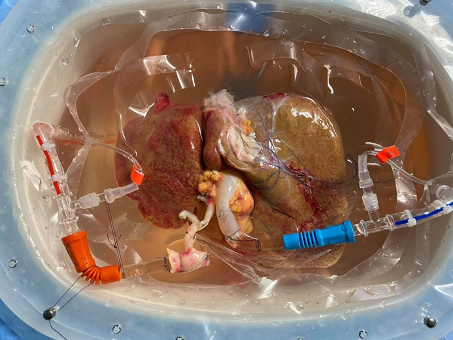The liver, taken from a deceased organ donor, before being transplanted was subjected to 2.5 hours long mechanical perfusion with a usage of a technology called Liver Assist. This part of the procedure was managed by a team of 3 surgeons: Prof. Waldemar Patkowski, Dr Wacław Hołówko and Dr Marcin Morawski. Immediately after the completion of the perfusion, the liver was successfully transplanted to a 59-year-old recipient with an advanced organ failure in the course of cirrhosis.
The transplantation was performed by Dr Ireneusz Grzelak and Dr Mariusz Grodzicki supported by the group of other specialists. The postoperative course was uncomplicated, the liver, right after the transplantation, undertook its action and the haemodynamic and biochemical parameters of the graft performance were excellent.
The patient, in a very good general condition, was discharged home and remains under the care of the Transplantation Clinic of the MUW’s Hepatology Department.
The patient who underwent the liver transplantation with the usage of D-HOPE mechanical perfusion in hypothermia, is also the first in Poland who received the organ with the help of Liver Assist technology. Therefore, the surgeons from the Clinic are the first from Poland to join the group of transplantation centers around the globe performing transplantation procedures with an application of this solution. The introduction of this method to clinical practice in our country will undoubtedly enhance the number of liver transplants by making it possible to use the organs that thus far were not being accepted for the procedure due to the quality (e.g. advanced steatosis, long ischaemia time). This is also going to be another step to increase the effectiveness of treatment of patients with end-stage liver disease.
